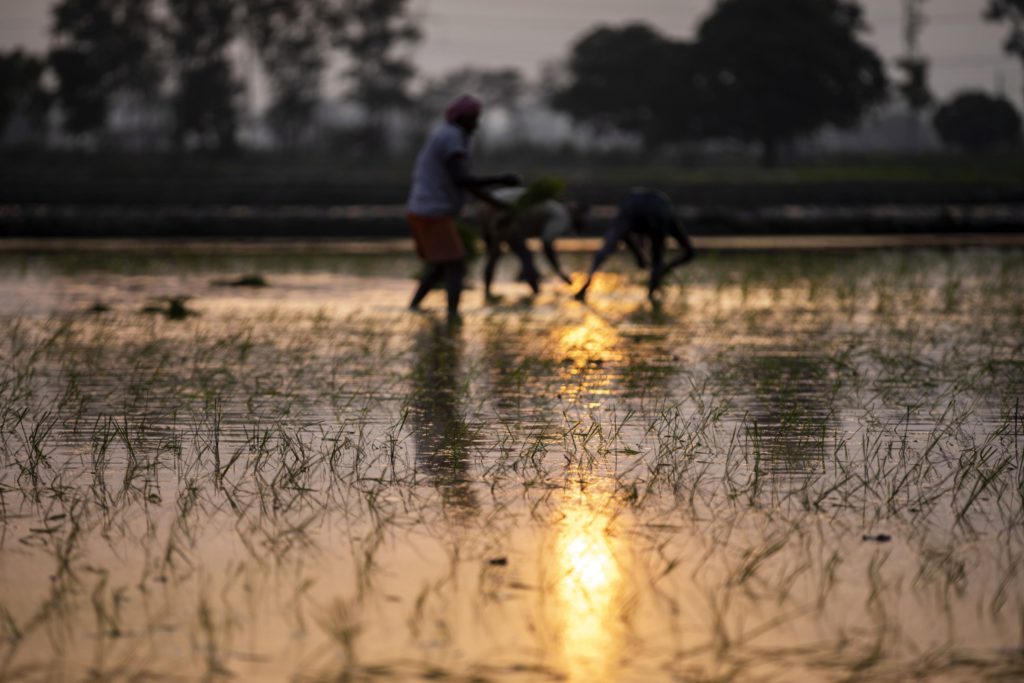(Bloomberg) — A cup of tea in 2006 changed genetic engineering forever.
Jill Banfield, a University of California at Berkeley ecosystem scientist and 1999 MacArthur Foundation fellow, had become curious in 2006 about mysterious repeating DNA sequences that were common in microbes that live in some of the planet’s most extreme environments, such as deep-sea heat vents, acid mines and geysers. She just needed a biochemist to help explain what the sequences known as Crispr/Cas9 were, and ideally somebody local.
The best scientist-location tool available to the highly decorated PhD researcher — a web search — recommended a Berkeley RNA specialist named Jennifer Doudna.
The two met for tea at a campus lunch spot. Doudna hadn’t heard of Crispr, a kind of microbial immune system, and was intrigued. So much so that over the next few years she would go on to solve the sequence’s structure, which turned out to be something of a miraculous cut-and-paste tool for DNA.
The discovery heralded a new era of genomics that is revolutionizing science and multiple industries and earned Doudna half the 2020 Nobel Prize in chemistry.
Now, 15 years after their initial meeting, Banfield, Doudna and a large team of co-authors have published a paper that takes a major step toward solving the thorny problem of how to study and alter genomes of microbes living in complicated real-world environments, such as the gut microbiome or soil. The complexity of microbial communities has been a major obstacle to discovering technologies that can prevent diseases and improve agriculture.
It’s a critical step toward curbing methane, a harmful greenhouse gas that is emitted during rice production.
The work is a part of the Innovative Genomics Institute, a consortium Doudna founded to develop uses for Crispr and other genetic engineering techniques to solve problems in health, food production and elsewhere. The IGI in July received a $3 million gift from an anonymous donor to pursue climate work, and Banfield’s research on microbial ecosystems is fundamental to that push.
Soil is “the most difficult ecosystem on the planet to study,” Banfield said.
“It’s the most complex. It really was the Holy Grail to be able to get any insights into soil microbial communities.”
Much of the IGI’s climate work is focused on the science of rice, a major source of calories for more than half the world.
Beyond the primary problem of ensuring people have enough, rice also presents a significant climate challenge. The crop is grown in flooded fields. That water cuts off oxygen to the soil, which allows methane-producing microbes to thrive: Rice production is responsible for as much as 34 million tons of methane a year, or about 2% of greenhouse-gas emissions.
China and India make up half that total.
Rice fields are like smokestacks for soil methane, and to shut down those emissions, scientists first need to understand the microbes. The trouble has been that culturing microbial communities and tinkering with them in a lab with traditional tools “could take years or might fail altogether,” IGI authors write.
Their new paper demonstrates that using a Crispr-based system can “accelerate this process to weeks.”
Shutting down the rice methane spigot might require any of several alterations, either to the plants themselves or the microbial network into which the roots grow.
Engineered solutions might range from introducing microbes that can eat methane in oxygen-free conditions to just flat-out eliminating specific organisms from the soil, the way antibiotics kill disease-causing bacteria.
“This is all very blue-sky at the present time,” Banfield said.
“First, we want to understand the pieces and how they fit together.”
Pamela Ronald is a University of California at Davis professor who has studied rice her entire career and written a book on the future of food.
More than a decade ago she and a colleague identified the gene used to develop flood-tolerant rice that’s now grown by more than 6 million farmers in India and Bangladesh.
There are more than 130,000 kinds of rice.
Lurking in those genomes may be overlooked evolutionary skills that scientists could graft into agricultural varieties, for heat resistance, nutrition or disease prevention. Ronald’s lab is looking for changes that, combined with Banfield’s microbial communities, could lead to lower-emission crops.
An even greater challenge awaits in the digestive tracts of cattle and other ruminants, which are responsible for more than 5% of global emissions.
The agricultural sector has plenty of options to cut emissions in the meantime, while Banfield, Ronald, Doudna and others genetically engineer new possibilities.
Growing more rice in the same acreage leads to lower emissions; every 1% gain in yield also cuts methane emissions by about 1%.
Flooding rice fields less often can cut emissions by up to half. Farmers who can control water flow to fields nimbly have found alternating wet and dry periods during the growing season can cut emissions much more.
(Dry periods can cause more nitrous-oxide emissions, alas, another potent greenhouse gas). Other promising techniques include plowing rice straw back into fields in the off-season, and seeding fields with biochar, a kind of charcoal, to encourage greater carbon storage in soil.
Timothy Searchinger, a senior research scholar at Princeton University’s Center for Policy Research on Energy and the Environment, welcomes progress toward a high-ambition, high-reward genetic-engineering breakthrough in concert with proven real-world techniques — the topic of a policy paper he issued in November.
“It’s entirely a practical challenge,” he said.
“How do you actually make this stuff happen? What are the incentives to make this happen? The practical challenges are real but that doesn’t mean you can’t get around them.”
With Crispr comes the promise that practical challenges can be surmounted at the molecular level.
Perhaps even over tea.











